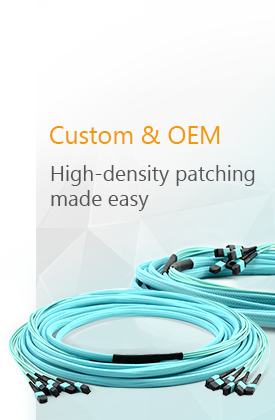With the development of the passive optical network (PON) and fiber to the home (FTTh), the market of passive optical components has become more and more broader. In order to ensure the high quality of these passive optical components, we must firstly have a good origin of the production and measurement. The origin here, we mainly refer to the light source. In this paper, we are going to introduce a new type of light source called Amplified Spontaneous Emission (ASE) broadband light source with our comprehensive solutions.
ASE light source, short for amplified spontaneous emission, is a highly stable, high output power broadband light source which covers a broad range of wavelengths including the C-band, C+L-band and L-band. The broad spectrum width for the ASE light source is ideal for applications in Dense Wavelength Division Multiplexing (DWDM) systems, sensor systems and components characterization. In addition, it is widely used for manufacturing and testing of passive optical components, such as Fiber Bragg Grating (FBG) filter, Filter Wavelength Division Multiplexer (FWDM), Arrayed Waveguide Gratings (AWG),couplers/splitters, isolators, circulators and other optical passive devices.
In recent years, the research of ASE light source used in DWDM system obviously shows the value of it. As we know, overcoming the capacity limits of optical fiber cables is a large part of solving the current problems of optical transmission. However, the two main traditional methods to enhance the use of capacity are accompanied by significant limitations. For instance, one of the traditional methods is to enhance the transmission rate of a single channel, but it will increase the dispersion of the system and the dispersion compensation will enhance the cost of the system. And the other method is to reduce the frequency spacing and increase the number of channels. This method will cause the nonlinearity effect. In order to resolve these problems, people gradually turn to the potential bandwidth of optical fiber transmission, using C-band (traditional, 1520-1570 nm) and L-band (long-wavelength band, 1570-1620 nm), as well as the C+L-band to achieve the signals transmitted simultaneously, thus avoiding the technical problems limited by the traditional methods of increasing capacity and enhancing the capacity directly in DWDM system. ASE light source, as the key component in Wavelength Division Multiplexing (WDM) system testing, is also required to be improved with the bandwidth.
At present, the C-band ASE light source research has become more mature in both technology and market supply. To better satisfy the demands of wider bandwidth and larger capacity of fiber optical transmission, people strive to develop the other wavelengths, e.g. L-band, and C+L-band. We always lead the industry in terms of product features. We offer three options of lightwave band of the ASE light source, i.e. C Band ASE Broadband Light Source, C+L Band ASE Broadband Light Source and L Band ASE Broadband Light Source with desktop or min size module package. They are available with flattened spectral output for demanding applications, non-flattened response to less demanding or cost-sensitive applications. Moreover, a range of output powers are also provided.


